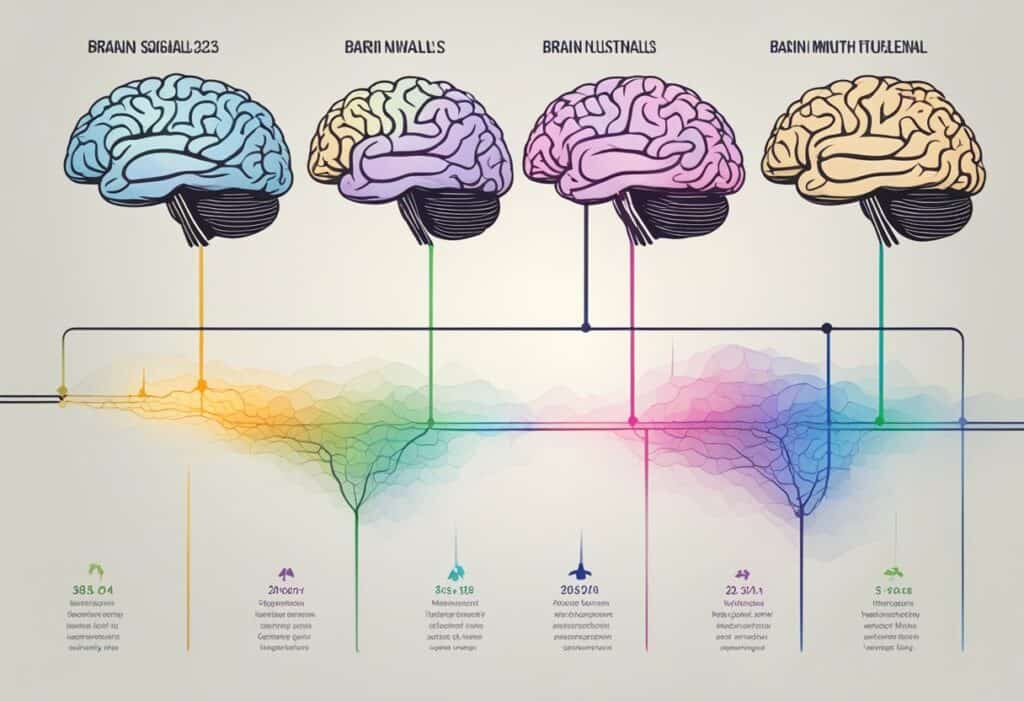Artificial intelligence (AI) is shaping the future of climate modeling with unprecedented precision and depth. Traditional methods of understanding climate patterns are being revolutionized by machine learning techniques that parse vast data sets to unveil intricate climate dynamics.
For instance, neural networks, a cornerstone of AI, are now detecting forced climate patterns in historical and projected data. They can pinpoint critical signals amidst climatic noise.

Moreover, the integration of AI into weather forecasting and climate research heralds a new era of hyper-accurate predictions. Researchers are exploring the synthesis of AI-based schemes with numerical models to produce next-generation global weather and climate models.
These advanced tools are not just augmenting existing models; they are transforming our ability to respond to climatic events with speed and specificity.
The synergy between AI and climate modeling scales further to fill gaps in historical data, offering a comprehensive view of Earth’s climatic past.
Advanced AI algorithms are capable of reconstructing missing climate information, thereby enhancing our understanding of climate behavior over time.
As AI continues to evolve, its role in climate science is becoming increasingly vital. It equips researchers with robust tools to tackle this century’s most pressing environmental challenges.
Fundamentals of AI in Climate Science
Unlocking the secrets of climate change requires AI’s computational power and knack for pattern recognition in unwieldy datasets.
AI and Machine Learning Concepts
Artificial intelligence (AI) and machine learning (ML) are pillars of modern computational analysis, transforming vast arrays of climate data into actionable insights.
A study outlines that by harnessing deep learning techniques, scientists can uncover patterns that traditional methods may miss.
Machine learning algorithms excel at making predictions, adapting to new data, and revealing the nuances of climate change impacts.
Climate Models and Simulations
Climate models serve as digital laboratories, theorizing Earth’s reactions to various scenarios.
Simulations bridge the gap between theoretical and tangible, quantifying the ‘what-ifs’ of climate outcomes.
The application of AI refines these models, improving their resolution and accuracy, as noted in a discussion on optimizing climate models.
Climate scientists use this confluence of AI and simulation to anticipate and plan for the future.
Understanding Earth System Dynamics
AI peels back the layers of the Earth system, dissecting complex interactions.
The Earth sciences benefit from AI’s capability to analyze multiple scales of climate phenomena.
AI aids in clarifying the dynamics driving climate systems, as evidenced by comprehensive approaches in AI in Earth sciences.
As researchers understand these dynamics better, they enhance their ability to predict and mitigate the effects of climate change.
Advances in Computational Technologies
Recent advancements in computational technologies have revolutionized the field of climate modeling, enabling simulations with enhanced accuracy and detail.
High-Performance Computing
Whether it’s predicting weather patterns or analyzing climate change impacts, high-performance computing (HPC) empowers researchers to handle complex calculations at unprecedented speeds.
Supercomputers, for example, harness the power of parallel processing to crunch vast datasets in a fraction of the time once needed.
Big Data and AI Tools
In the realm of climate science, the fusion of big data with AI tools is spawning a new era of predictive power.
AI algorithms sift through terabytes of climate data to detect patterns that would escape the human eye, refining models that predict future climate trends.
Modeling Small-Scale Processes
Pinpointing small-scale processes within climate systems was once a significant hurdle.
Today, increased computing power enables models to capture these intricate details, from the dance of dust particles to the flutter of leaves, offering a more comprehensive understanding of the climate.
AI Applications in Climate Prediction

Artificial intelligence is revolutionizing the way we comprehend and predict atmospheric patterns. Its applications in climate modeling are shaping a more resilient future.
Improving Weather Forecasts
AI harnesses vast data sets to enhance the precision of weather forecasts.
Techniques such as machine learning and neural networks analyze historical weather data to foresee future conditions.
Research indicates that AI models provide robust results, which can be particularly crucial for predicting severe weather events, thereby saving lives and mitigating economic losses.
For instance, the SVM method has shown promise in offering accurate daily rainfall predictions.
Future Climate Projections
Moreover, AI contributes significantly to long-term climate projections.
It unlocks the potential to assess regional climate changes, enabling scientists to expect shifts in temperature and precipitation patterns with greater fidelity.
Advanced AI techniques have been applied to enhance climate predictions, including the application of bootstrap aggregation to bolster decadal climate predictions.
Digital Twin Earth Models
Lastly, the creation of ‘Digital Twin’ Earth models marks a monumental leap.
By mirroring Earth’s system models through AI, scientists can run simulations to test various scenarios, predicting the impact of different human and natural interventions.
These models serve as a cutting-edge tool in the fight against climate change, offering a powerful means for policy-making and environmental assessment.
Enhancing Data Interpretation and Uncertainty

Climate modeling hinges on robust interpretation and handling of uncertainty. Advances in AI catalyze breakthroughs in this realm, transforming data into climate action insights.
Handling Diverse Climate Data
Intelligent systems now expertly navigate the diversity of climate data, including satellite images, to deliver nuanced environmental analysis.
Clearly, the variety of data requires algorithms proficient in discerning subtle patterns amidst the complex tapestry of global climate variables.
Interpreting Complex Climate Patterns
AI shines when it unravels the complexity of climate systems.
By harnessing data science methodologies, it boosts the interpretability of climate simulations, providing a vivid lens through which to view potential future scenarios.
Addressing Uncertainties in Predictions
AI does not shy away from the inherent uncertainties in climate projections.
Instead, it seeks to quantify and reduce uncertainties, sharpening the predictive edge of climate models.
This systematic approach fortifies confidence in the results, guiding pivotal decisions in climate policy and management.
AI-driven Climate Change Adaptation

AI-driven climate change adaptation harnesses technology to forge resilient futures, marrying hazard models with robust mitigation strategies.
Developing Detailed Hazard Models
Experts are pioneering the creation of unparalleled, detailed hazard models.
These models analyze vast datasets with AI, enabling precise predictions of climate impacts.
Critical to this endeavor are AI-driven models that vividly map the complex interplay between various environmental factors, painting a clearer picture of potential local and global hazards.
Climate Change Mitigation Strategies
Consequently, scholars design mitigation strategies empowered by AI’s predictive prowess.
By leveraging cutting-edge AI analyses, they cultivate actionable strategies that anticipate and address the wide-ranging repercussions of climate change.
These AI-enlightened solutions contribute significantly to sustainable development, arming humanity with the knowledge to combat climate threats effectively.
Scientific Papers
- “Deep learning for climate model evaluation: A study using CMIP5 data” by Prabhat et al. (2018) – This paper explores the application of deep learning techniques for evaluating climate models using data from the CMIP5 (Coupled Model Intercomparison Project Phase 5) archive.
- “Machine learning for the geosciences: Challenges and opportunities” by Karpatne et al. (2018) – Although not solely focused on climate modeling, this paper provides an overview of the challenges and opportunities of applying machine learning techniques in geoscience research, including climate modeling.
- “Artificial intelligence in climate modeling” by Sellar et al. (2019) – This paper discusses the potential applications of artificial intelligence in climate modeling, including the use of machine learning algorithms for parameterization and improving model performance.
- “Deep learning for multi-year ENSO forecasts” by Ham et al. (2020) – This paper explores the use of deep learning techniques for forecasting the El Niño-Southern Oscillation (ENSO), a climate phenomenon with significant global impacts.
- “Using machine learning to parameterize moist convection: Potential for modeling of climate, climate change, and extreme events” by O’Gorman (2020) – This paper investigates the use of machine learning to parameterize moist convection in climate models, with implications for simulating climate, climate change, and extreme weather events.
Case Studies
a. Google’s DeepMind AI for Energy Use Optimization: DeepMind, an AI research lab owned by Google, has been applied to optimize energy use in data centers. This case study demonstrates how AI can be used to reduce energy consumption and greenhouse gas emissions in large-scale computing infrastructure.
b. Climate Analytics: This organization utilizes machine learning algorithms to analyze climate data and provide insights into climate change impacts, adaptation strategies, and policy recommendations. Case studies from Climate Analytics showcase how AI techniques can be applied to address real-world climate challenges.
c. IBM’s Green Horizon Project: IBM’s Green Horizon project aims to leverage AI and big data analytics to address environmental challenges, including climate modeling, renewable energy integration, and pollution reduction. Case studies from this project highlight the potential of AI technologies in mitigating climate change and promoting sustainability.
d. Microsoft’s AI for Earth Initiative: Microsoft’s AI for Earth initiative supports projects that use AI technologies to address environmental issues, including climate modeling, biodiversity conservation, and natural resource management. Case studies from this initiative demonstrate the impact of AI-driven solutions in advancing climate research and fostering environmental stewardship.





